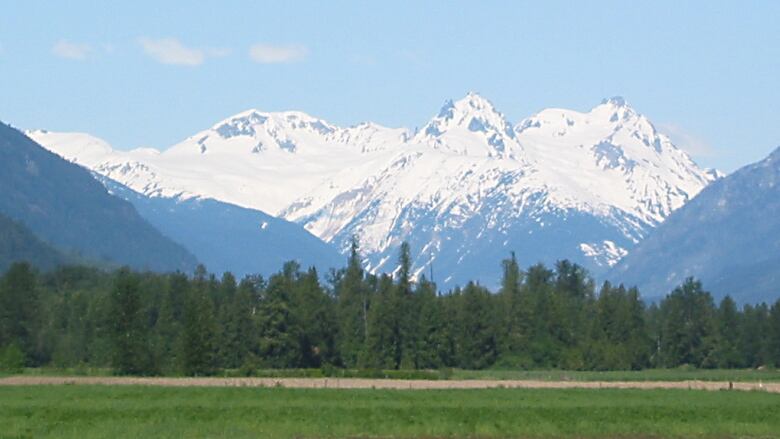Canada has dormant volcanoes. Climate change could wake them up
Scientists monitor Mount Meager as melting glaciers affect the stability of volcanic rock area

As Mount Kilauea, one of the world's most active volcanoes, kicked into high gear Thursday with an explosive eruption, scientists are keeping an eye on a Canadian volcano that is currently unstable.
Glyn Williams-Jones points to climate change and the disappearance of glaciers for why Mount Meager, which is 160 km northwest of Vancouver, and 60 km west of Pemberton, is in the state that it is now.
"We've got this big monster volcano. It's about two million years old and it's been ticking along, changing over that time, but we know that there's volcanic gas coming through the ice," Williams-Jones, co-director of the Centre for Natural Hazards Research, told The Current's guest host Laura Lynch.
In 2010, Mount Meager caused the largest landslide in Canadian history, dumping 53 million cubic metres of mud and rocks into the nearby area.
It eclipsed the previous Canadian record set in 1965, when 47 million cubic metres of rock came down the Cascade Mountains near Hope, B.C.

According to William-Jones, much of Mount Meager is held together by a mix of rock and ice. That ice is slowly melting, he said, and as the resulting water seeps through the rock, its walls start to recede, destabilizing the volcano.
"So if we start to change the flow of water — say, due to climate change as the glaciers are starting to recede — we're starting to potentially see issues around that changing dynamic," he said.
Mapping hazardous risk
While most of the volcanoes in Canada have not erupted in thousands of years (or not at all), scientists are working on preparing for the possibility.
William-Jones there's no immediate danger of any of these volcanoes erupting in the near future, but attention must be paid to their current stability or instability.
According to archival photos, parts of Mount Meager's northwest side are unstable. A satellite monitoring the area has detected around 300 million cubic metres of moving rock, explained William-Jones.
Beyond working with multiplicities that could be affected and emergency departments in B.C., hazard maps are being developed to help narrow in on at-risk areas if an event occurred.
"The fortunate thing that we have is our volcanoes are relatively remote from large population centres, so we know we can map out where a big landslide would go," he said.

Lava chasers
For lava chaser and photographer Demian Barrios, the explosive eruption of Kilauea with ashes reportedly flying nearly a kilometre into the air, is powerfully addictive.
Chasers try to get as close as possible to an active volcano. He says the experience can leave him overwhelmed and humbled in the moment.
"You can feel the reverberations in your chest. You can feel the ground shaking beneath you," Barrios said.
"It makes me feel grounded. It makes me feel alive and it kind of just makes you be very very present."

Barrios, who has been chasing volcanoes in Hawaii for 20 years, is aware of the danger. But he said with practice there are ways to avoid big risk.
"The most dangerous thing I do on a regular basis is drive my vehicle," he often tells people.
Listen to the full conversation near the top of this post.
This segment was produced by The Current's Ines Colabrese and Jessica Linzey.
